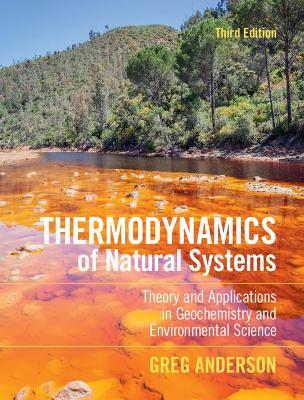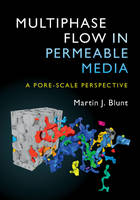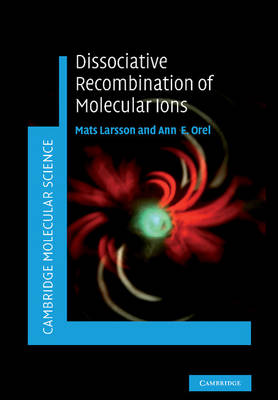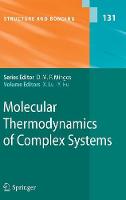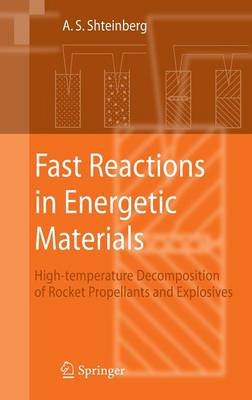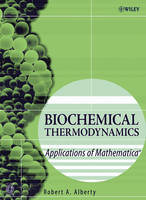Chemical Thermodynamics
 -15%
portes grátis
-15%
portes grátis
Chemical Thermodynamics
Basic Concepts and Methods
Klotz, Irving M.; Rosenberg, Robert M.
John Wiley & Sons Inc
06/2008
592
Dura
Inglês
9780471780151
15 a 20 dias
962
1 Introduction 1
1.1 Origins of Chemical Thermodynamics 1
1.2 Objectives of Chemical Thermodynamics 4
1.3 Limitations of Classic Thermodynamics 4
References 6
2 Mathematical Preparation for Thermodynamics 9
2.1 Variables of Thermodynamics 10
Extensive and Intensive Quantities 10
Units and Conversion Factors 10
2.2 Analytic Methods 10
Partial Differentiation 10
Exact Differentials 15
Homogeneous Functions 18
Exercises 21
References 27
3 The First Law of Thermodynamics 29
3.1 Definitions 29
Temperature 31
Work 33
3.2 The First Law of Thermodynamics 37
Energy 37
Heat 38
General Form of the First Law 38
Exercises 40
References 41
4 Enthalpy, Enthalpy of Reaction, and Heat Capacity 43
4.1 Enthalpy 44
Definition 44
Relationship between QV and QP 46
4.2 Enthalpy of Reactions 47
Definitions and Conventions 47
4.3 Enthalpy as a State Function 52
Enthalpy of Formation from Enthalpy of Reaction 52
Enthalpy of Formation from Enthalpy of Combustion 53
Enthalpy of Transition from Enthalpy of Combustion 53
Enthalpy of Conformational Transition of a Protein from Indirect Calorimetric Measurements 54
Enthalpy of Solid-State Reaction from Measurements of Enthalpy of Solution 56
4.4 Bond Enthalpies 57
Definition of Bond Enthalpies 57
Calculation of Bond Enthalpies 58
Enthalpy of Reaction from Bond Enthalpies 59
4.5 Heat Capacity 60
Definition 61
Some Relationships between CP and CV 62
Heat Capacities of Gases 64
Heat Capacities of Solids 67
Heat Capacities of Liquids 68
Other Sources of Heat Capacity Data 68
4.6 Enthalpy of Reaction as a Function of Temperature 68
Analytic Method 69
Arithmetic Method 71
Graphical or Numerical Methods 72
Exercises 72
References 78
5 Applications of the First Law to Gases 81
5.1 Ideal Gases 81
Definition 81
Enthalpy as a Function of Temperature Only 83
Relationship Between CP and CV 84
Calculation of the Thermodynamic Changes in Expansion Processes 84
5.2 Real Gases 94
Equations of State 94
Joule-Thomson Effect 98
Calculations of Thermodynamic Quantities in Reversible Expansions 102
Exercises 104
References 108
6 The Second Law of Thermodynamics 111
6.1 The Need for a Second Law 111
6.2 The Nature of the Second Law 112
Natural Tendencies Toward Equilibrium 112
Statement of the Second Law 112
Mathematical Counterpart of the Verbal Statement 113
6.3 The Carnot Cycle 113
The Forward Cycle 114
The Reverse Cycle 116
Alternative Statement of the Second Law 117
Carnot's Theorem 118
6.4 The Thermodynamic Temperature Scale 120
6.5 The Definition of S, the Entropy of a System 125
6.6 The Proof that S is a Thermodynamic Property 126
Any Substance in a Carnot Cycle 126
Any Substance in Any Reversible Cycle 127
Entropy S Depends Only on the State of the System 129
6.7 Entropy Changes in Reversible Processes 130
General Statement 130
Isothermal Reversible Changes 130
Adiabatic Reversible Changes 131
Reversible Phase Transitions 131
Isobaric Reversible Temperature Changes 132
Isochoric Reversible Temperature Changes 133
6.8 Entropy Changes in Irreversible Processes 133
Irreversible Isothermal Expansion of an Ideal Gas 133
Irreversible Adiabatic Expansion of an Ideal Gas 135
Irreversible Flow of Heat from a Higher Temperature to a Lower Temperature 136
Irreversible Phase Transitions 137
Irreversible Chemical Reactions 138
General Statement 139
6.9 General Equations for the Entropy of Gases 142
Entropy of the Ideal Gas 142
Entropy of a Real Gas 143
6.10 Temperature-Entropy Diagram 144
6.11 Entropy as an Index of Exhaustion 146
Exercises 150
References 157
7 Equilibrium and Spontaneity for Systems at Constant Temperature 159
7.1 Reversibility, Spontaneity, and Equilibrium 159
Systems at Constant Temperature and Volume 160
Systems at Constant Temperature and Pressure 162
Heat of Reaction as an Approximate Criterion of Spontaneity 164
7.2 Properties of the Gibbs, Helmholtz, and Planck Functions 165
The Functions as Thermodynamic Properties 165
Relationships among G, Y, and A 165
Changes in the Functions for Isothermal Conditions 165
Equations for Total Differentials 166
Pressure and Temperature Derivatives of the Functions 167
Equations Derived from the Reciprocity Relationship 169
7.3 The Gibbs Function and Chemical Reactions 170
Standard States 170
7.4 Pressure and Temperature Dependence of ?G 172
7.5 Useful Work and the Gibbs and Helmholtz Functions 175
Isothermal Changes 175
Changes at Constant Temperature and Pressure 177
Relationship between ?HP and QP When Useful Work is Performed 178
Application to Electrical Work 179
Gibbs-Helmholtz Equation 180
The Gibbs Function and Useful Work in Biologic Systems 181
Exercises 185
References 191
8 Application of the Gibbs Function and the Planck Function to Some Phase Changes 193
8.1 Two Phases at Equilibrium as a Function of Pressure and Temperature 193
Clapeyron Equation 194
Clausius-Clapeyron Equation 196
8.2 The Effect of an Inert Gas on Vapor Pressure 198
Variable Total Pressure at Constant Temperature 199
Variable Temperature at Constant Total Pressure 200
8.3 Temperature Dependence of Enthalpy of Phase Transition 200
8.4 Calculation of Change in the Gibbs Function for Spontaneous Phase Change 202
Arithmetic Method 202
Analytic Method 203
Exercises 205
References 210
9 Thermodynamics of Systems of Variable Composition 211
9.1 State Functions for Systems of Variable Composition 211
9.2 Criteria of Equilibrium and Spontaneity in Systems of Variable Composition 213
9.3 Relationships Among Partial Molar Properties of a Single Component 215
9.4 Relationships Between Partial Molar Quantities of Different Components 216
Partial Molar Quantities for Pure Phase 218
9.5 Escaping Tendency 219
Chemical Potential and Escaping Tendency 219
9.6 Chemical Equilibrium in Systems of Variable Composition 221
Exercises 223
Reference 226
10 Mixtures of Gases and Equilibrium in Gaseous Mixtures 227
10.1 Mixtures of Ideal Gases 227
The Entropy and Gibbs Function for Mixing Ideal Gases 228
The Chemical Potential of a Component of an Ideal Gas Mixture 230
Chemical Equilibrium in Ideal Gas Mixtures 231
Dependence of K on Temperature 232
Comparison of Temperature Dependence of ?G degreesm and ln K 234
10.2 The Fugacity Function of a Pure Real Gas 236
Change of Fugacity with Pressure 237
Change of Fugacity with Temperature 238
10.3 Calculation of the Fugacity of a Real Gas 239
Graphical or Numerical Methods 240
Analytical Methods 244
10.4 Joule-Thomson Effect for a Van der Waals Gas 247
Approximate Value of a for a Van der Waals Gas 247
Fugacity at Low Pressures 248
Enthalpy of a Van der Waals Gas 248
Joule-Thomson Coefficient 249
10.5 Mixtures of Real Gases 249
Fugacity of a Component of a Gaseous Solution 250
Approximate Rule for Solutions of Real Gases 251
Fugacity Coefficients in Gaseous Solutions 251
Equilibrium Constant and Change in Gibbs Functions and Planck Functions for Reactions of Real Gases 252
Exercises 253
References 256
11 The Third Law of Thermodynamics 259
11.1 Need for the Third Law 259
11.2 Formulation of the Third Law 260
Nernst Heat Theorem 260
Planck's Formulation 261
Statement of Lewis and Randall 262
11.3 Thermodynamic Properties at Absolute Zero 263
Equivalence of G and H 263
?CP in an Isothermal Chemical Reaction 263
Limiting Values of CP and CV 264
Temperature Derivatives of Pressure and Volume 264
11.4 Entropies at 298 K 265
Typical Calculations 266
Apparent Exceptions to the Third Law 270
Tabulations of Entropy Values 274
Exercises 277
References 280
12 Application of the Gibbs Function to Chemical Changes 281
12.1 Determination of ?G degreesm from Equilibrium Measurements 281
12.2 Determination of ?G degreesm from Measurements of Cell potentials 284
12.3 Calculation of ?G degreesm from Calorimetric Measurements 285
12.4 Calculation of a Gibbs Function of a Reaction from Standard Gibbs Function of Formation 286
12.5 Calculation of a Standard Gibbs Function from Standard Entropies and Standard Enthalpies 287
Enthalpy Calculations 287
Entropy Calculations 290
Change in Standard Gibbs Function 290
Exercises 293
References 301
13 The Phase Rule 303
13.1 Derivation of the Phase Rule 303
Nonreacting Systems 304
Reacting Systems 306
13.2 One-Component Systems 307
13.3 Two-Component Systems 309
Two Phases at Different Pressures 312
Phase Rule Criterion of Purity 315
Exercises 316
References 316
14 The Ideal Solution 319
14.1 Definition 319
14.2 Some Consequences of the Definition 321
Volume Changes 321
Heat Effects 322
14.3 Thermodynamics of Transfer of a Component from One Ideal Solution to Another 323
14.4 Thermodynamics of Mixing 325
14.5 Equilibrium between a Pure Solid and an Ideal Liquid Solution 327
Change of Solubility with Pressure at a Fixed Temperature 328
Change of Solubility with Temperature 329
14.6 Equilibrium between an Ideal Solid Solution and an Ideal Liquid Solution 332
Composition of the Two Phases in Equilibrium 332
Temperature Dependence of the Equilibrium Compositions 333
Exercises 333
References 335
15 Dilute Solutions of Nonelectrolytes 337
15.1 Henry's Law 337
15.2 Nernst's Distribution Law 340
15.3 Raoult's Law 341
15.4 Van't Hoff's Law of Osmotic Pressure 344
Osmotic Work in Biological Systems 349
15.5 Van't Hoff's Law of Freezing-Point Depression and Boiling-Point Elevation 350
Exercises 353
References 355
16 Activities, Excess Gibbs Functions, and Standard States for Nonelectrolytes 357
16.1 Definitions of Activities and Activity Coefficients 358
Activity 358
Activity Coefficient 358
16.2 Choice of Standard States 359
Gases 359
Liquids and Solids 360
16.3 Gibbs Function and the Equilibrium Constant in Terms of Activity 365
16.4 Dependence of Activity on Pressure 367
16.5 Dependence of Activity on Temperature 368
Standard Partial Molar Enthalpies 368
Equation for Temperature Derivative of the Activity 369
16.6 Standard Entropy 370
16.7 Deviations from Ideality in Terms of Excess Thermodynamic Functions 373
Representation of G E m as a Function of Composition 374
16.8 Regular Solutions and Henry's Law 376
16.9 Regular Solutions and Limited Miscibility 378
Exercises 381
References 384
17 Determination of Nonelectrolyte Activities and Excess Gibbs Functions From Experimental Data 385
17.1 Activity from Measurements of Vapor Pressure 385
Solvent 385
Solute 386
17.2 Excess Gibbs Function from Measurement of Vapor Pressure 388
17.3 Activity of a Solute from Distribution between Two Immiscible Solvents 391
17.4 Activity from Measurement of Cell Potentials 393
17.5 Determination of the Activity of One Component from the Activity of the Other 397
Calculation of Activity of Solvent from That of Solute 398
Calculation of Activity of Solute from That of Solvent 399
17.6 Measurements of Freezing Points 400
Exercises 401
References 406
18 Calculation of Partial Molar Quantities and Excess Molar Quantities from Experimental Data: Volume and Enthalpy 407
18.1 Partial Molar Quantities by Differentiation of J as a Function of Composition 407
Partial Molar Volume 409
Partial Molar Enthalpy 413
Enthalpies of Mixing 414
Enthalpies of Dilution 417
18.2 Partial Molar Quantities of One Component from those of Another Component by Numerical Integration 420
Partial Molar Volume 421
Partial Molar Enthalpy 421
18.3 Analytic Methods for Calculation of Partial Molar Properties 422
Partial Molar Volume 422
Partial Molar Enthalpy 423
18.4 Changes in J for Some Processes in Solutions 423
Transfer Process 423
Integral Process 425
18.5 Excess Properties: Volume and Enthalpy 426
Excess Volume 426
Excess Enthalpy 426
Exercises 427
References 436
19 Activity, Activity Coefficients, and Osmotic Coefficients of Strong Electrolytes 439
19.1 Definitions and Standard states for Dissolved Electrolytes 440
Uni-univalent Electrolytes 440
Multivalent Electrolytes 443
Mixed Electrolytes 446
19.2 Determination of Activities of Strong Electrolytes 448
Measurement of Cell Potentials 449
Solubility Measurements 453
Colligative Property Measurement: The Osmotic Coefficient 455
Extension of Activity Coefficient Data to Additional Temperatures with Enthalpy of Dilution Data 460
19.3 Activity Coefficients of Some Strong Electrolytes 462
Experimental Values 462
Theoretical Correlation 462
Exercises 464
References 470
20 Changes in Gibbs Function for Processes in Solutions 471
20.1 Activity Coefficients of Weak Electrolytes 471
20.2 Determination of Equilibrium Constants for Dissociation of Weak Electrolytes 472
From Measurements of Cell Potentials 473
From Conductance Measurements 475
20.3 Some Typical Calculations for ?fG degreesm 480
Standard Gibbs Function for Formation of Aqueous Solute: HCl 480
Standard Gibbs Function of Formation of Individual Ions: HCl 482
Standard Gibbs Function for Formation of Solid Solute in Aqueous Solution 482
Standard Gibbs Function for Formation of Ion of Weak Electrolyte 484
Standard Gibbs Function for Formation of Moderately Strong Electrolyte 485
Effect of Salt Concentration on Geological Equilibrium Involving Water 486
General Comments 486
20.4 Entropies of Ions 487
The Entropy of an Aqueous Solution of a Salt 488
Entropy of Formation of Individual Ions 488
Ion Entropies in Thermodynamic Calculations 491
Exercises 491
References 496
21 Systems Subject to a Gravitational or a Centrifugal Field 499
21.1 Dependence of the Gibbs Function on External Field 499
21.2 System in a Gravitational Field 502
21.3 System in a Centrifugal Field 505
Exercises 509
References 510
22 Estimation of Thermodynamic Quantities 511
22.1 Empirical Methods 511
Group Contribution Method of Andersen, Beyer, Watson, and Yoneda 512
Typical Examples of Estimating Entropies 516
Other Methods 522
Accuracy of the Approximate Methods 522
Equilibrium in Complex Systems 523
Exercises 523
References 524
23 Concluding Remarks 527
References 529
Appendix a Practical Mathematical Techniques 531
A.1 Analytical Methods 531
Linear Least Squares 531
Nonlinear Least Squares 534
A.2 Numerical and Graphical Methods 535
Numerical Differentiation 535
Numerical Integration 538
Use of the Digital Computer 540
Graphical Differentiation 541
Graphical Integration 542
Exercises 542
References 543
Index 545
1 Introduction 1
1.1 Origins of Chemical Thermodynamics 1
1.2 Objectives of Chemical Thermodynamics 4
1.3 Limitations of Classic Thermodynamics 4
References 6
2 Mathematical Preparation for Thermodynamics 9
2.1 Variables of Thermodynamics 10
Extensive and Intensive Quantities 10
Units and Conversion Factors 10
2.2 Analytic Methods 10
Partial Differentiation 10
Exact Differentials 15
Homogeneous Functions 18
Exercises 21
References 27
3 The First Law of Thermodynamics 29
3.1 Definitions 29
Temperature 31
Work 33
3.2 The First Law of Thermodynamics 37
Energy 37
Heat 38
General Form of the First Law 38
Exercises 40
References 41
4 Enthalpy, Enthalpy of Reaction, and Heat Capacity 43
4.1 Enthalpy 44
Definition 44
Relationship between QV and QP 46
4.2 Enthalpy of Reactions 47
Definitions and Conventions 47
4.3 Enthalpy as a State Function 52
Enthalpy of Formation from Enthalpy of Reaction 52
Enthalpy of Formation from Enthalpy of Combustion 53
Enthalpy of Transition from Enthalpy of Combustion 53
Enthalpy of Conformational Transition of a Protein from Indirect Calorimetric Measurements 54
Enthalpy of Solid-State Reaction from Measurements of Enthalpy of Solution 56
4.4 Bond Enthalpies 57
Definition of Bond Enthalpies 57
Calculation of Bond Enthalpies 58
Enthalpy of Reaction from Bond Enthalpies 59
4.5 Heat Capacity 60
Definition 61
Some Relationships between CP and CV 62
Heat Capacities of Gases 64
Heat Capacities of Solids 67
Heat Capacities of Liquids 68
Other Sources of Heat Capacity Data 68
4.6 Enthalpy of Reaction as a Function of Temperature 68
Analytic Method 69
Arithmetic Method 71
Graphical or Numerical Methods 72
Exercises 72
References 78
5 Applications of the First Law to Gases 81
5.1 Ideal Gases 81
Definition 81
Enthalpy as a Function of Temperature Only 83
Relationship Between CP and CV 84
Calculation of the Thermodynamic Changes in Expansion Processes 84
5.2 Real Gases 94
Equations of State 94
Joule-Thomson Effect 98
Calculations of Thermodynamic Quantities in Reversible Expansions 102
Exercises 104
References 108
6 The Second Law of Thermodynamics 111
6.1 The Need for a Second Law 111
6.2 The Nature of the Second Law 112
Natural Tendencies Toward Equilibrium 112
Statement of the Second Law 112
Mathematical Counterpart of the Verbal Statement 113
6.3 The Carnot Cycle 113
The Forward Cycle 114
The Reverse Cycle 116
Alternative Statement of the Second Law 117
Carnot's Theorem 118
6.4 The Thermodynamic Temperature Scale 120
6.5 The Definition of S, the Entropy of a System 125
6.6 The Proof that S is a Thermodynamic Property 126
Any Substance in a Carnot Cycle 126
Any Substance in Any Reversible Cycle 127
Entropy S Depends Only on the State of the System 129
6.7 Entropy Changes in Reversible Processes 130
General Statement 130
Isothermal Reversible Changes 130
Adiabatic Reversible Changes 131
Reversible Phase Transitions 131
Isobaric Reversible Temperature Changes 132
Isochoric Reversible Temperature Changes 133
6.8 Entropy Changes in Irreversible Processes 133
Irreversible Isothermal Expansion of an Ideal Gas 133
Irreversible Adiabatic Expansion of an Ideal Gas 135
Irreversible Flow of Heat from a Higher Temperature to a Lower Temperature 136
Irreversible Phase Transitions 137
Irreversible Chemical Reactions 138
General Statement 139
6.9 General Equations for the Entropy of Gases 142
Entropy of the Ideal Gas 142
Entropy of a Real Gas 143
6.10 Temperature-Entropy Diagram 144
6.11 Entropy as an Index of Exhaustion 146
Exercises 150
References 157
7 Equilibrium and Spontaneity for Systems at Constant Temperature 159
7.1 Reversibility, Spontaneity, and Equilibrium 159
Systems at Constant Temperature and Volume 160
Systems at Constant Temperature and Pressure 162
Heat of Reaction as an Approximate Criterion of Spontaneity 164
7.2 Properties of the Gibbs, Helmholtz, and Planck Functions 165
The Functions as Thermodynamic Properties 165
Relationships among G, Y, and A 165
Changes in the Functions for Isothermal Conditions 165
Equations for Total Differentials 166
Pressure and Temperature Derivatives of the Functions 167
Equations Derived from the Reciprocity Relationship 169
7.3 The Gibbs Function and Chemical Reactions 170
Standard States 170
7.4 Pressure and Temperature Dependence of ?G 172
7.5 Useful Work and the Gibbs and Helmholtz Functions 175
Isothermal Changes 175
Changes at Constant Temperature and Pressure 177
Relationship between ?HP and QP When Useful Work is Performed 178
Application to Electrical Work 179
Gibbs-Helmholtz Equation 180
The Gibbs Function and Useful Work in Biologic Systems 181
Exercises 185
References 191
8 Application of the Gibbs Function and the Planck Function to Some Phase Changes 193
8.1 Two Phases at Equilibrium as a Function of Pressure and Temperature 193
Clapeyron Equation 194
Clausius-Clapeyron Equation 196
8.2 The Effect of an Inert Gas on Vapor Pressure 198
Variable Total Pressure at Constant Temperature 199
Variable Temperature at Constant Total Pressure 200
8.3 Temperature Dependence of Enthalpy of Phase Transition 200
8.4 Calculation of Change in the Gibbs Function for Spontaneous Phase Change 202
Arithmetic Method 202
Analytic Method 203
Exercises 205
References 210
9 Thermodynamics of Systems of Variable Composition 211
9.1 State Functions for Systems of Variable Composition 211
9.2 Criteria of Equilibrium and Spontaneity in Systems of Variable Composition 213
9.3 Relationships Among Partial Molar Properties of a Single Component 215
9.4 Relationships Between Partial Molar Quantities of Different Components 216
Partial Molar Quantities for Pure Phase 218
9.5 Escaping Tendency 219
Chemical Potential and Escaping Tendency 219
9.6 Chemical Equilibrium in Systems of Variable Composition 221
Exercises 223
Reference 226
10 Mixtures of Gases and Equilibrium in Gaseous Mixtures 227
10.1 Mixtures of Ideal Gases 227
The Entropy and Gibbs Function for Mixing Ideal Gases 228
The Chemical Potential of a Component of an Ideal Gas Mixture 230
Chemical Equilibrium in Ideal Gas Mixtures 231
Dependence of K on Temperature 232
Comparison of Temperature Dependence of ?G degreesm and ln K 234
10.2 The Fugacity Function of a Pure Real Gas 236
Change of Fugacity with Pressure 237
Change of Fugacity with Temperature 238
10.3 Calculation of the Fugacity of a Real Gas 239
Graphical or Numerical Methods 240
Analytical Methods 244
10.4 Joule-Thomson Effect for a Van der Waals Gas 247
Approximate Value of a for a Van der Waals Gas 247
Fugacity at Low Pressures 248
Enthalpy of a Van der Waals Gas 248
Joule-Thomson Coefficient 249
10.5 Mixtures of Real Gases 249
Fugacity of a Component of a Gaseous Solution 250
Approximate Rule for Solutions of Real Gases 251
Fugacity Coefficients in Gaseous Solutions 251
Equilibrium Constant and Change in Gibbs Functions and Planck Functions for Reactions of Real Gases 252
Exercises 253
References 256
11 The Third Law of Thermodynamics 259
11.1 Need for the Third Law 259
11.2 Formulation of the Third Law 260
Nernst Heat Theorem 260
Planck's Formulation 261
Statement of Lewis and Randall 262
11.3 Thermodynamic Properties at Absolute Zero 263
Equivalence of G and H 263
?CP in an Isothermal Chemical Reaction 263
Limiting Values of CP and CV 264
Temperature Derivatives of Pressure and Volume 264
11.4 Entropies at 298 K 265
Typical Calculations 266
Apparent Exceptions to the Third Law 270
Tabulations of Entropy Values 274
Exercises 277
References 280
12 Application of the Gibbs Function to Chemical Changes 281
12.1 Determination of ?G degreesm from Equilibrium Measurements 281
12.2 Determination of ?G degreesm from Measurements of Cell potentials 284
12.3 Calculation of ?G degreesm from Calorimetric Measurements 285
12.4 Calculation of a Gibbs Function of a Reaction from Standard Gibbs Function of Formation 286
12.5 Calculation of a Standard Gibbs Function from Standard Entropies and Standard Enthalpies 287
Enthalpy Calculations 287
Entropy Calculations 290
Change in Standard Gibbs Function 290
Exercises 293
References 301
13 The Phase Rule 303
13.1 Derivation of the Phase Rule 303
Nonreacting Systems 304
Reacting Systems 306
13.2 One-Component Systems 307
13.3 Two-Component Systems 309
Two Phases at Different Pressures 312
Phase Rule Criterion of Purity 315
Exercises 316
References 316
14 The Ideal Solution 319
14.1 Definition 319
14.2 Some Consequences of the Definition 321
Volume Changes 321
Heat Effects 322
14.3 Thermodynamics of Transfer of a Component from One Ideal Solution to Another 323
14.4 Thermodynamics of Mixing 325
14.5 Equilibrium between a Pure Solid and an Ideal Liquid Solution 327
Change of Solubility with Pressure at a Fixed Temperature 328
Change of Solubility with Temperature 329
14.6 Equilibrium between an Ideal Solid Solution and an Ideal Liquid Solution 332
Composition of the Two Phases in Equilibrium 332
Temperature Dependence of the Equilibrium Compositions 333
Exercises 333
References 335
15 Dilute Solutions of Nonelectrolytes 337
15.1 Henry's Law 337
15.2 Nernst's Distribution Law 340
15.3 Raoult's Law 341
15.4 Van't Hoff's Law of Osmotic Pressure 344
Osmotic Work in Biological Systems 349
15.5 Van't Hoff's Law of Freezing-Point Depression and Boiling-Point Elevation 350
Exercises 353
References 355
16 Activities, Excess Gibbs Functions, and Standard States for Nonelectrolytes 357
16.1 Definitions of Activities and Activity Coefficients 358
Activity 358
Activity Coefficient 358
16.2 Choice of Standard States 359
Gases 359
Liquids and Solids 360
16.3 Gibbs Function and the Equilibrium Constant in Terms of Activity 365
16.4 Dependence of Activity on Pressure 367
16.5 Dependence of Activity on Temperature 368
Standard Partial Molar Enthalpies 368
Equation for Temperature Derivative of the Activity 369
16.6 Standard Entropy 370
16.7 Deviations from Ideality in Terms of Excess Thermodynamic Functions 373
Representation of G E m as a Function of Composition 374
16.8 Regular Solutions and Henry's Law 376
16.9 Regular Solutions and Limited Miscibility 378
Exercises 381
References 384
17 Determination of Nonelectrolyte Activities and Excess Gibbs Functions From Experimental Data 385
17.1 Activity from Measurements of Vapor Pressure 385
Solvent 385
Solute 386
17.2 Excess Gibbs Function from Measurement of Vapor Pressure 388
17.3 Activity of a Solute from Distribution between Two Immiscible Solvents 391
17.4 Activity from Measurement of Cell Potentials 393
17.5 Determination of the Activity of One Component from the Activity of the Other 397
Calculation of Activity of Solvent from That of Solute 398
Calculation of Activity of Solute from That of Solvent 399
17.6 Measurements of Freezing Points 400
Exercises 401
References 406
18 Calculation of Partial Molar Quantities and Excess Molar Quantities from Experimental Data: Volume and Enthalpy 407
18.1 Partial Molar Quantities by Differentiation of J as a Function of Composition 407
Partial Molar Volume 409
Partial Molar Enthalpy 413
Enthalpies of Mixing 414
Enthalpies of Dilution 417
18.2 Partial Molar Quantities of One Component from those of Another Component by Numerical Integration 420
Partial Molar Volume 421
Partial Molar Enthalpy 421
18.3 Analytic Methods for Calculation of Partial Molar Properties 422
Partial Molar Volume 422
Partial Molar Enthalpy 423
18.4 Changes in J for Some Processes in Solutions 423
Transfer Process 423
Integral Process 425
18.5 Excess Properties: Volume and Enthalpy 426
Excess Volume 426
Excess Enthalpy 426
Exercises 427
References 436
19 Activity, Activity Coefficients, and Osmotic Coefficients of Strong Electrolytes 439
19.1 Definitions and Standard states for Dissolved Electrolytes 440
Uni-univalent Electrolytes 440
Multivalent Electrolytes 443
Mixed Electrolytes 446
19.2 Determination of Activities of Strong Electrolytes 448
Measurement of Cell Potentials 449
Solubility Measurements 453
Colligative Property Measurement: The Osmotic Coefficient 455
Extension of Activity Coefficient Data to Additional Temperatures with Enthalpy of Dilution Data 460
19.3 Activity Coefficients of Some Strong Electrolytes 462
Experimental Values 462
Theoretical Correlation 462
Exercises 464
References 470
20 Changes in Gibbs Function for Processes in Solutions 471
20.1 Activity Coefficients of Weak Electrolytes 471
20.2 Determination of Equilibrium Constants for Dissociation of Weak Electrolytes 472
From Measurements of Cell Potentials 473
From Conductance Measurements 475
20.3 Some Typical Calculations for ?fG degreesm 480
Standard Gibbs Function for Formation of Aqueous Solute: HCl 480
Standard Gibbs Function of Formation of Individual Ions: HCl 482
Standard Gibbs Function for Formation of Solid Solute in Aqueous Solution 482
Standard Gibbs Function for Formation of Ion of Weak Electrolyte 484
Standard Gibbs Function for Formation of Moderately Strong Electrolyte 485
Effect of Salt Concentration on Geological Equilibrium Involving Water 486
General Comments 486
20.4 Entropies of Ions 487
The Entropy of an Aqueous Solution of a Salt 488
Entropy of Formation of Individual Ions 488
Ion Entropies in Thermodynamic Calculations 491
Exercises 491
References 496
21 Systems Subject to a Gravitational or a Centrifugal Field 499
21.1 Dependence of the Gibbs Function on External Field 499
21.2 System in a Gravitational Field 502
21.3 System in a Centrifugal Field 505
Exercises 509
References 510
22 Estimation of Thermodynamic Quantities 511
22.1 Empirical Methods 511
Group Contribution Method of Andersen, Beyer, Watson, and Yoneda 512
Typical Examples of Estimating Entropies 516
Other Methods 522
Accuracy of the Approximate Methods 522
Equilibrium in Complex Systems 523
Exercises 523
References 524
23 Concluding Remarks 527
References 529
Appendix a Practical Mathematical Techniques 531
A.1 Analytical Methods 531
Linear Least Squares 531
Nonlinear Least Squares 534
A.2 Numerical and Graphical Methods 535
Numerical Differentiation 535
Numerical Integration 538
Use of the Digital Computer 540
Graphical Differentiation 541
Graphical Integration 542
Exercises 542
References 543
Index 545


